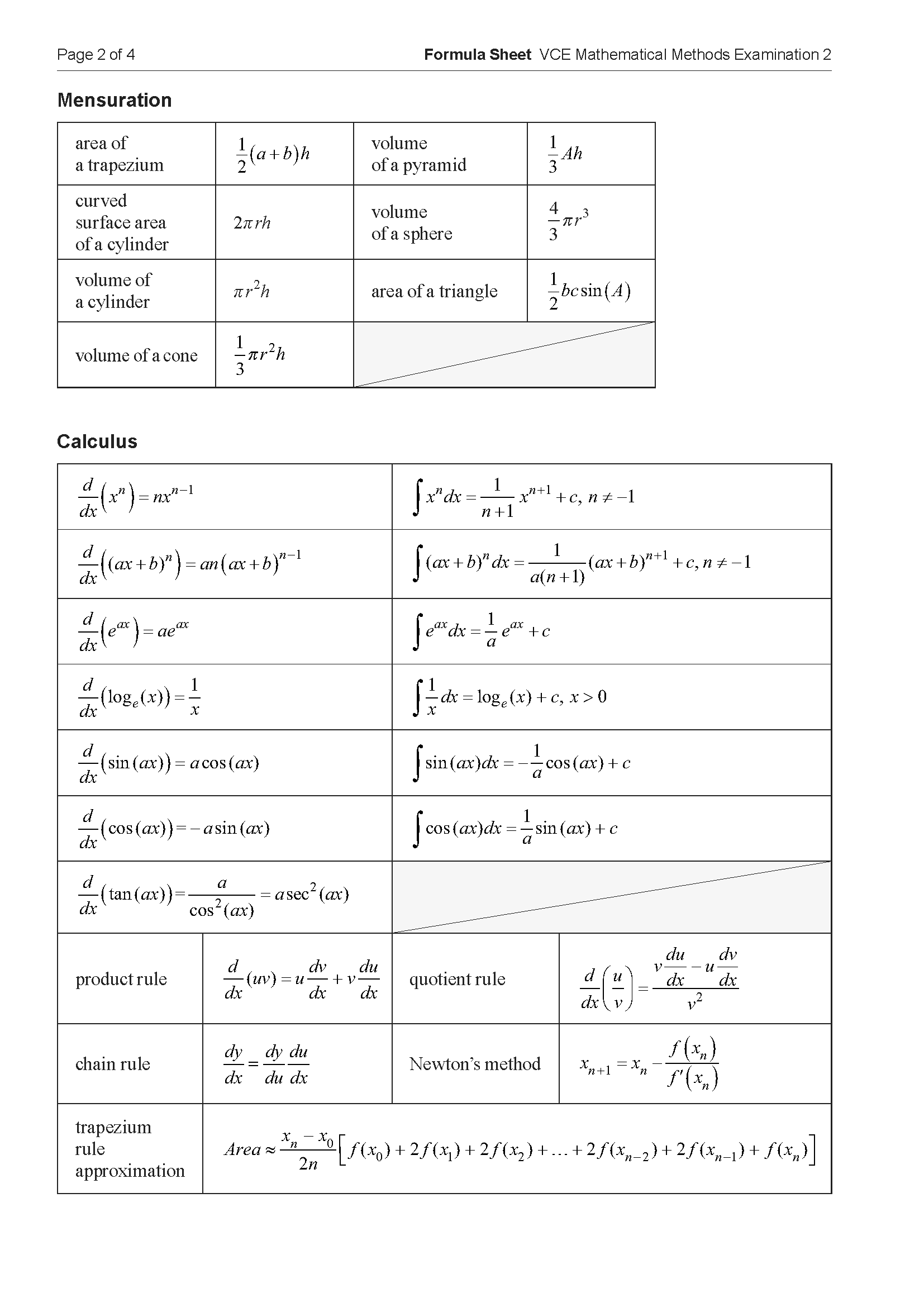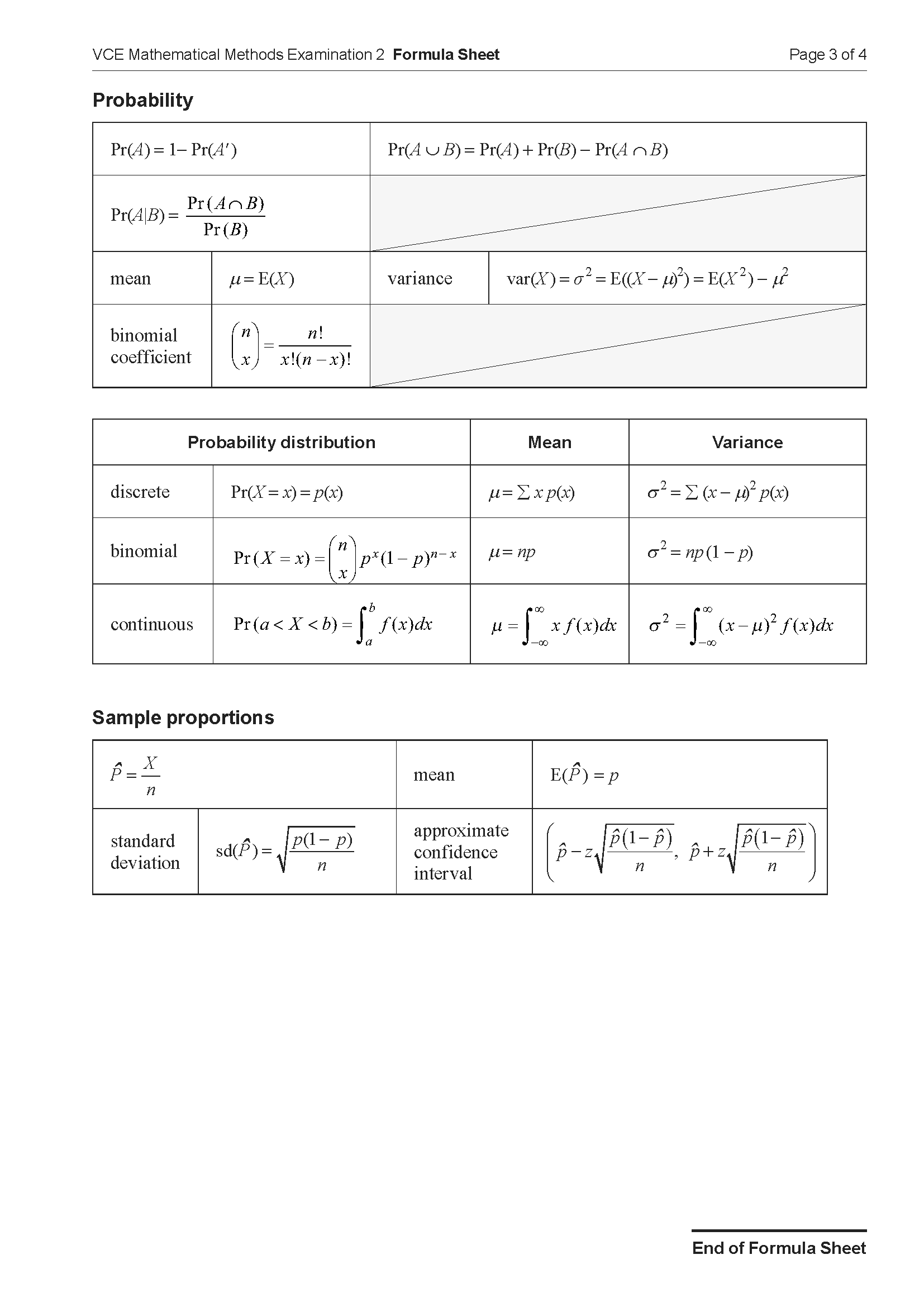2019 VCAA Maths Methods Exam 1
This is the full VCE Maths Methods Exam with worked solutions. You can also try Mini-Tests, which are official VCAA exams split into short tests you can do anytime.
Number of marks: 40
Reading time: 15 minutes
Writing time: 1 hours
Instructions
• Answer all questions in pencil on your Multiple-Choice Answer Sheet.
• Choose the response that is correct for the question.
• A correct answer scores 1; an incorrect answer scores 0.
• Marks will not be deducted for incorrect answers.
• No marks will be given if more than one answer is completed for any question.
• Unless otherwise indicated, the diagrams in this book are not drawn to scale.
Let \(f: (\frac{1}{3}, \infty) \to \mathbb{R}\), \(f(x) = \frac{1}{3x-1}\).
a.
i. Find \(f'(x)\). 1 mark
ii. Find an antiderivative of \(f(x)\). 1 mark
b. Let \(g: \mathbb{R}\setminus\{-1\} \to \mathbb{R}\), \(g(x) = \frac{\sin(\pi x)}{x+1}\).
Evaluate \(g'(1)\). 2 marks
a. Let \(f: \mathbb{R}\setminus\{\frac{1}{3}\} \to \mathbb{R}\), \(f(x) = \frac{1}{3x-1}\).
Find the rule of \(f^{-1}\). 2 marks
b. State the domain of \(f^{-1}\). 1 mark
c. Let \(g\) be the function obtained by applying the transformation \(T\) to the function \(f\), where
\(T\left(\begin{bmatrix} x \\ y \end{bmatrix}\right) = \begin{bmatrix} x \\ y \end{bmatrix} + \begin{bmatrix} c \\ d \end{bmatrix}\)
and \(c, d \in \mathbb{R}\).
Find the values of \(c\) and \(d\) given that \(g = f^{-1}\). 1 mark
The only possible outcomes when a coin is tossed are a head or a tail. When an unbiased coin is tossed, the probability of tossing a head is the same as the probability of tossing a tail.
Jo has three coins in her pocket; two are unbiased and one is biased. When the biased coin is tossed, the probability of tossing a head is \(\frac{1}{3}\).
Jo randomly selects a coin from her pocket and tosses it.
a. Find the probability that she tosses a head. 2 marks
b. Find the probability that she selected an unbiased coin, given that she tossed a head. 1 mark
a. Solve \(1 - \cos(\frac{x}{2}) = \cos(\frac{x}{2})\) for \(x \in [-2\pi, \pi]\). 2 marks
b. The function \(f: [-2\pi, \pi] \to \mathbb{R}\), \(f(x) = \cos(\frac{x}{2})\) is shown on the axes below.
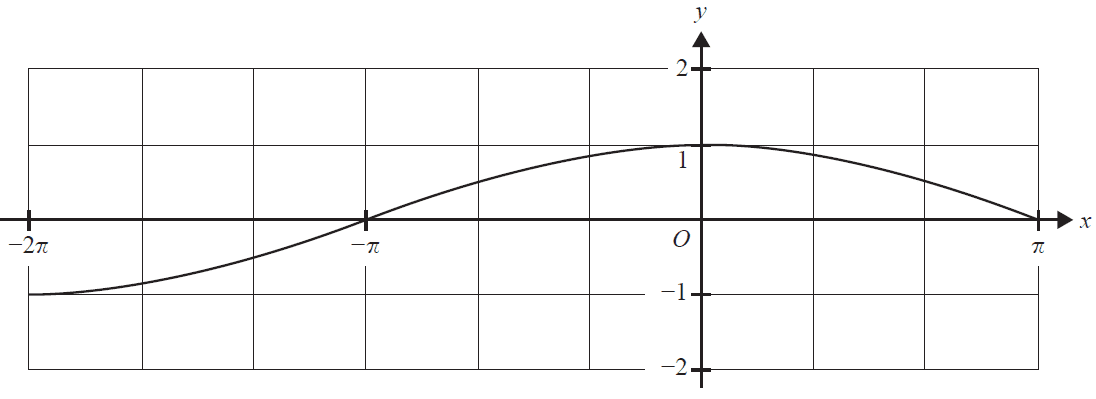
Let \(g: [-2\pi, \pi] \to \mathbb{R}\), \(g(x) = 1 - f(x)\).
Sketch the graph of \(g\) on the axes above. Label all points of intersection of the graphs of \(f\) and \(g\), and the endpoints of \(g\), with their coordinates. 2 marks
Let \(f: \mathbb{R}\setminus\{1\} \to \mathbb{R}\), \(f(x) = \frac{2}{(x-1)^2} + 1\).
a.
i. Evaluate \(f(-1)\). 1 mark
ii. Sketch the graph of \(f\) on the axes below, labelling all asymptotes with their equations. 2 marks
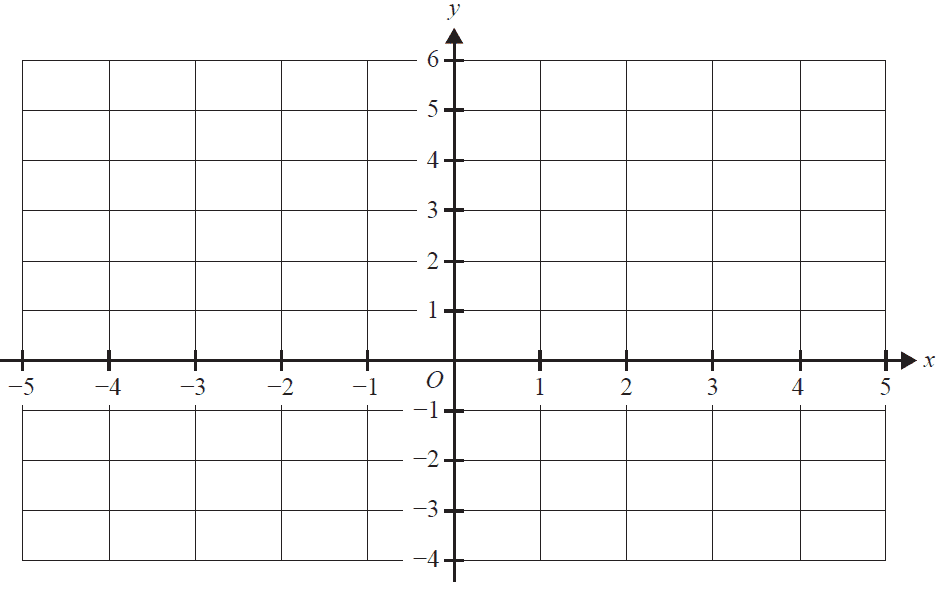
b. Find the area bounded by the graph of \(f\), the \(x\)-axis, the line \(x=-1\) and the line \(x=0\). 2 marks
Fred owns a company that produces thousands of pegs each day. He randomly selects 41 pegs that are produced on one day and finds eight faulty pegs.
a. What is the proportion of faulty pegs in this sample? 1 mark
b. Pegs are packed each day in boxes. Each box holds 12 pegs. Let \(\hat{P}\) be the random variable that represents the proportion of faulty pegs in a box.
The actual proportion of faulty pegs produced by the company each day is \(\frac{1}{6}\).
Find \(\Pr(\hat{P} < \frac{1}{6})\). Express your answer in the form \(a(b)^n\), where \(a\) and \(b\) are positive rational numbers and \(n\) is a positive integer. 2 marks
The graph of the relation \(y = \sqrt{1-x^2}\) is shown on the axes below. \(P\) is a point on the graph of this relation, \(A\) is the point \((-1, 0)\) and \(B\) is the point \((x, 0)\).
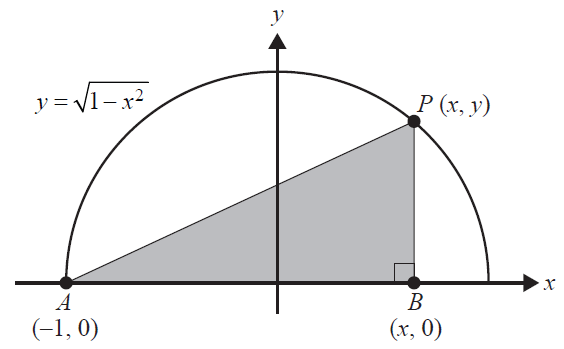
a. Find an expression for the length \(PB\) in terms of \(x\) only. 1 mark
b. Find the maximum area of the triangle \(ABP\). 3 marks
The function \(f: \mathbb{R} \to \mathbb{R}\), \(f(x)\) is a polynomial function of degree 4. Part of the graph of \(f\) is shown below.
The graph of \(f\) touches the \(x\)-axis at the origin.
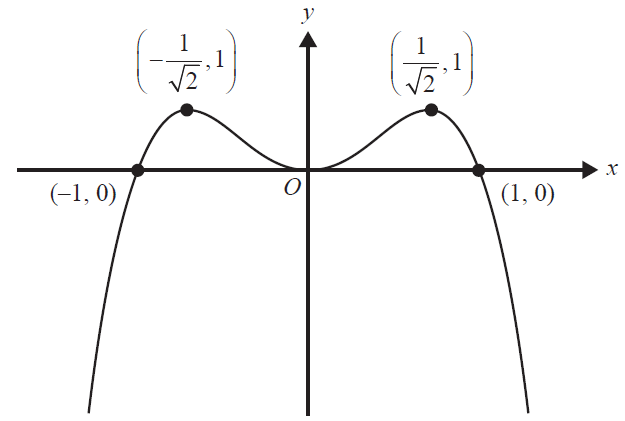
a. Find the rule of \(f\). 1 mark
Let \(g\) be a function with the same rule as \(f\).
Let \(h: D \to \mathbb{R}\), \(h(x) = \log_e(g(x)) - \log_e(x^3+x^2)\), where \(D\) is the maximal domain of \(h\).
b. State \(D\). 1 mark
c. State the range of \(h\). 2 marks
Consider the functions \(f: \mathbb{R} \to \mathbb{R}\), \(f(x) = 3+2x-x^2\) and \(g: \mathbb{R} \to \mathbb{R}\), \(g(x) = e^x\).
a. State the rule of \(g(f(x))\). 1 mark
b. Find the values of \(x\) for which the derivative of \(g(f(x))\) is negative. 2 marks
c. State the rule of \(f(g(x))\). 1 mark
d. Solve \(f(g(x)) = 0\). 2 marks
e. Find the coordinates of the stationary point of the graph of \(f(g(x))\). 2 marks
f. State the number of solutions to \(g(f(x)) + f(g(x)) = 0\). 1 mark
End of examination questions
VCE is a registered trademark of the VCAA. The VCAA does not endorse or make any warranties regarding this study resource. Past VCE exams and related content can be accessed directly at www.vcaa.vic.edu.au
